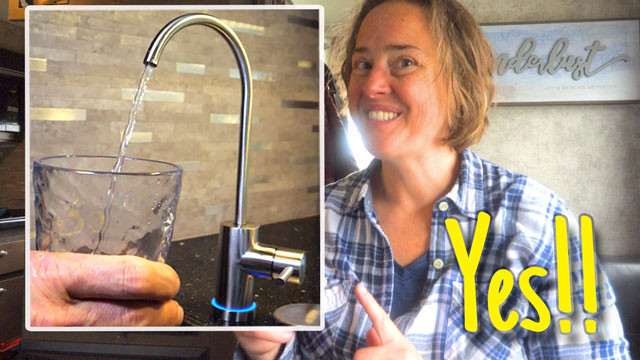
Old Water Filtering Method
We’ve been on the road for almost a year now and had been using a 3-phase filtering process:
- Catch the sand and heavier metals in the Clear20 Pre-Filter
- Follow up with a 1-micron water filter (that pre-filter helps prevent early clogging since this catches particles smaller than the standard blue filter
- For drinking water, filter in a Brita Water Filter
This does a decent job of making sure the water is safe to drink. My main issue with this setup was simply with the Brita water filter portion.
Why Change?
Well, in a truck camper (and in many RVs) you have very little countertop space. This Brita filter was taking up a lot of space behind our kitchen sink since we prefer to have room temperature water. If we wanted to put it in the refrigerator it would have taken up precious space there as well. So I was looking for something that could be much smaller and do the same job.
The second and the main reason changed was that the Brita water filters, whether you were using the standard or the blue “long-last” filters these things seemed to take forever to filter water. Usually the first week was usually ok (you could get a container of filtered water in 2-3 minutes) but then it would just continue to get worse to where we were waiting almost 10 minutes to filter one container. And – mind you- our coffee pot takes 3 containers to fill! Waiting 30 minutes to brew coffee should be outlawed!
I did try these long-last filters – I would also much prefer to be throwing away less plastic – to see if it would help improve the time but they didn’t seem to. And these were quite a bit more costly than the standard filters with little value (in our opinion).
Acuva Arrowmax
We ended up going with the Acuva Arrowmax system. This system is touted to eliminate up to 99.9999% of bacteria and viruses offering safe drinking water straight out of your tap. This was also something that we could install under our sink rather than dragging out a system every time we set up camp (a big value to us).
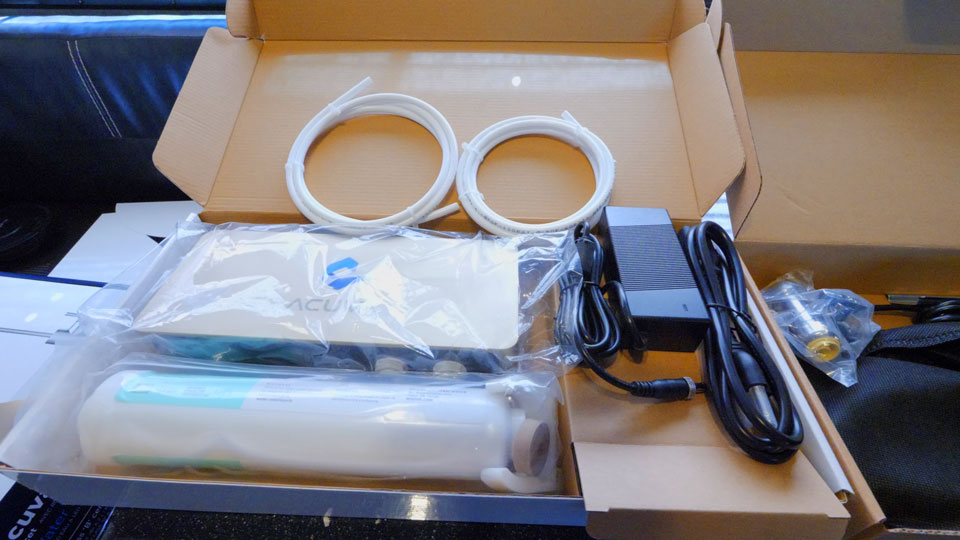
We chose the package that included the advanced pre-filter which is supposed to remove lead, heavy metals, chlorine, mercury, carcinogens, and other contaminants, as well as turbidity, unpleasant odors and tastes.
Arrowmax Options
For RV/marine use, there are 3 options, all related to the water flow rate. The numbers correspond to the liters per minute that the system can push out.
This was really the only major choice. The Arrowmax 1.0 and 2.0 are the same controller box size. The Arrowmax 5 is larger and a bit overkill for what we needed. 1L/min in our opinion seemed a bit slow, so we chose the 2L/min flow rate. This was not going to match my but I really didn’t need it to. It’s got to be quicker than my 20 minutes to fill up my coffee pot using the Brita water filter!
Installation
Installation was surprisingly easy. Gary is not a fan of working on anything with plumbing. I can sympathize since anything I’ve ever touched plumbing-wise does seem to end up in a larger project that planned. However, it was pretty simple to splice in the T valve. Gary did mention that he pre-installed the white Acuva hose before assembling the tee to the existing cold water line since you reeeally have to stretch to get into this area on our Host Cascade.
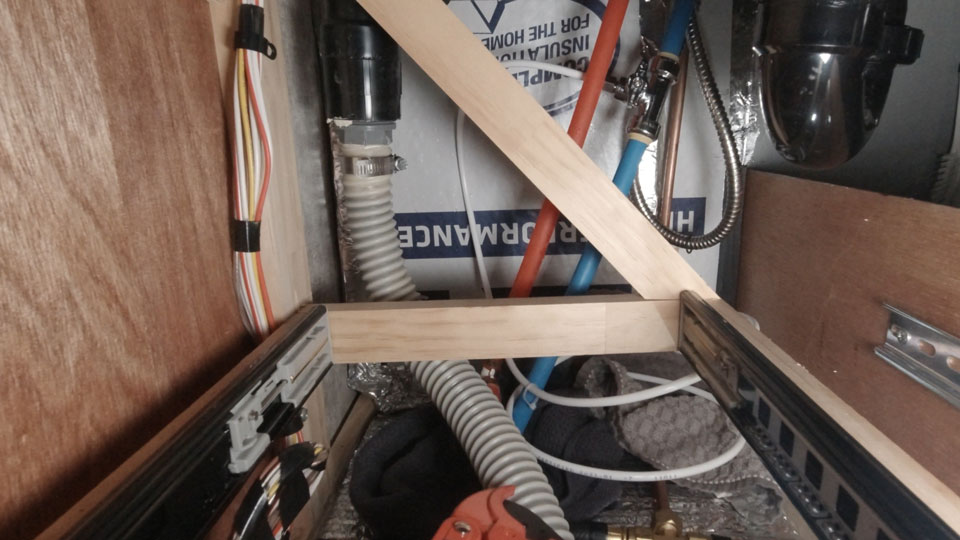
I would say that the majority of time Gary spent on this installation was reinforcing that flimsy piece of luan to hold the unit and talking about where to drill the hole for the faucet.
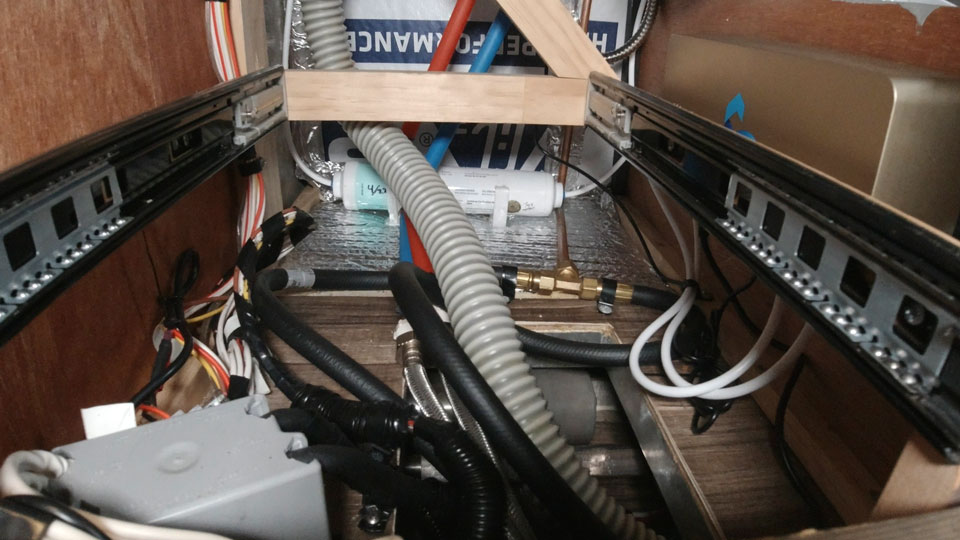
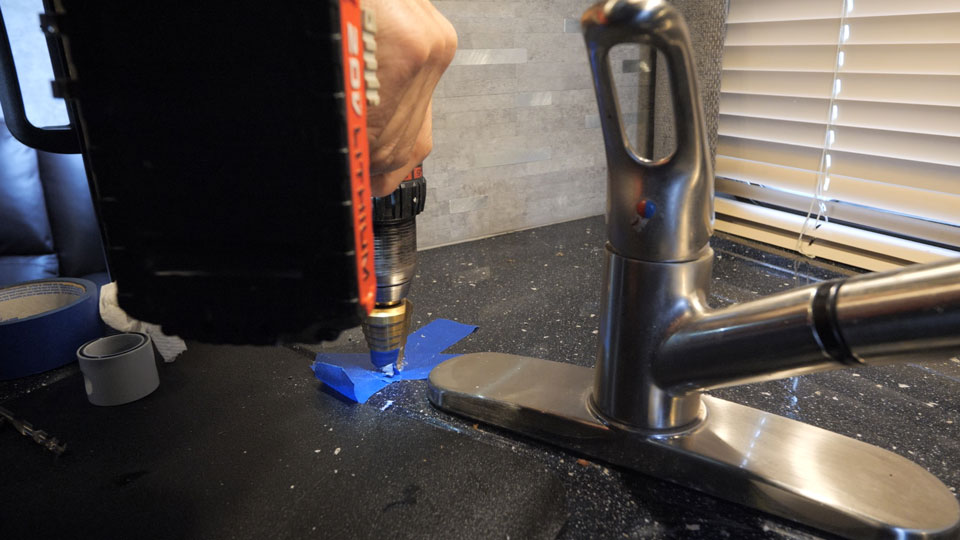
Results
We can certainly vouch for the taste – before we installed this, both my picky daughter and myself didn’t like drinking water from the RV. With this installed, both of us can enjoy the water coming out of the faucet instead of buying expensive and not so environmentally friendly plastic water bottles.
The flow rate personally doesn’t seem too bad. I can get my gigantic coffee pot filled in the time it takes me to get out the coffee grounds and filter and assemble. So good for me! Filling up this 16oz glass takes maybe 10 seconds.
I will say that the higher-flow water pump is having more of a challenge because of the varying flow rates throughout our rig. So, when we’re using this faucet, the pump does pulse. We’ll be adding some reduced flow rate filters on the sink faucet and then will have to readjust the pump settings. But, that’s on our future to-do list…
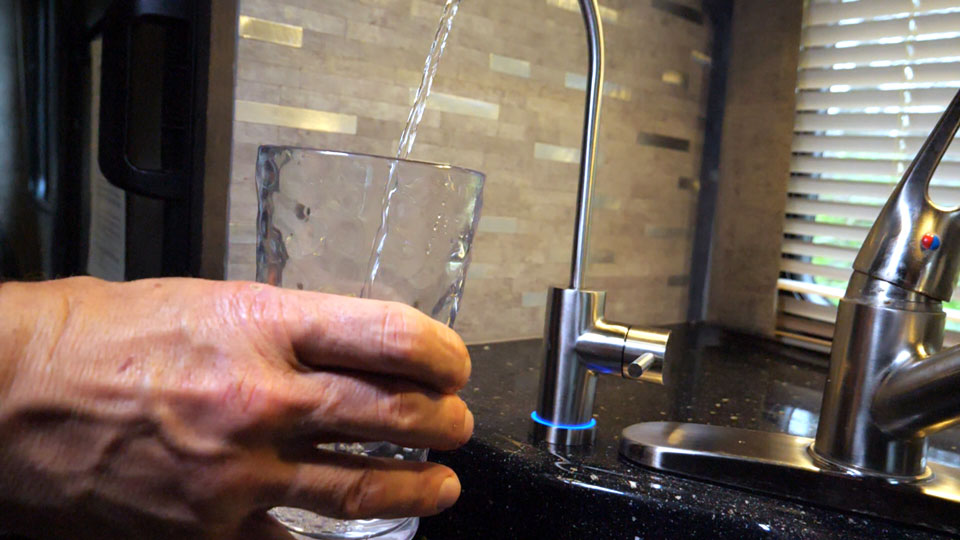
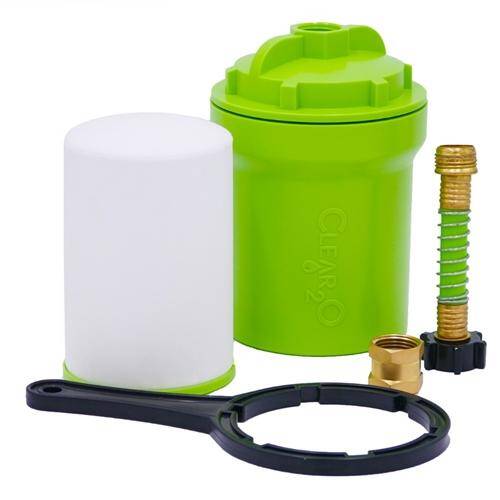
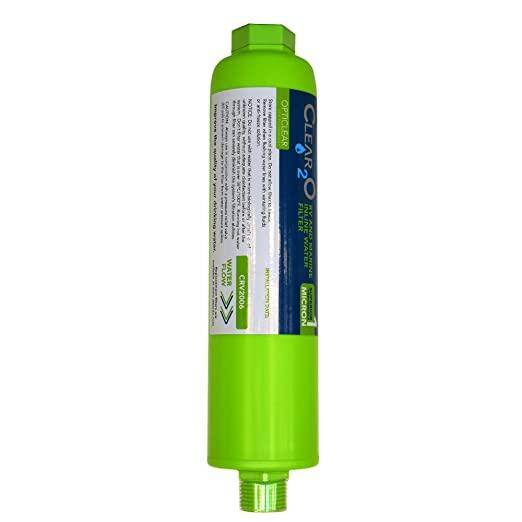
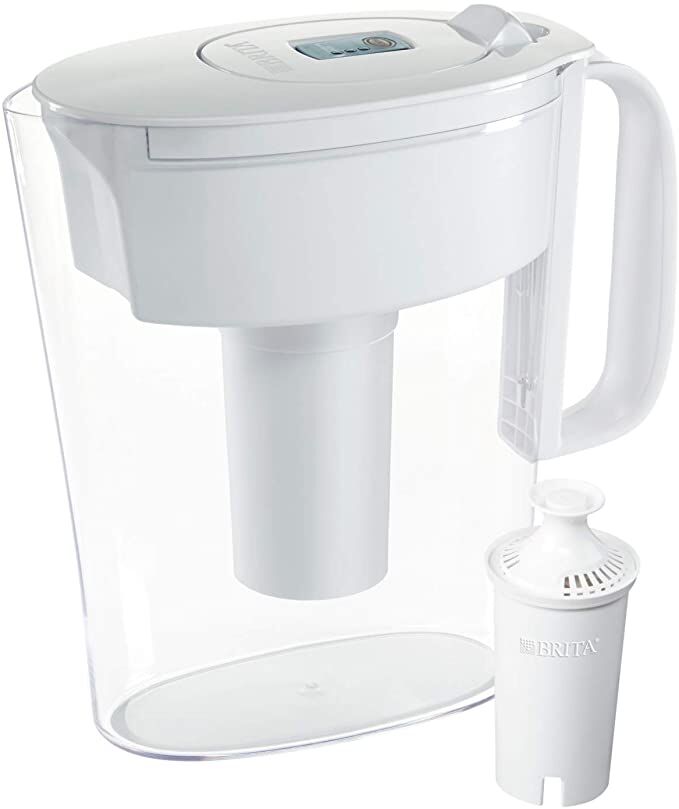
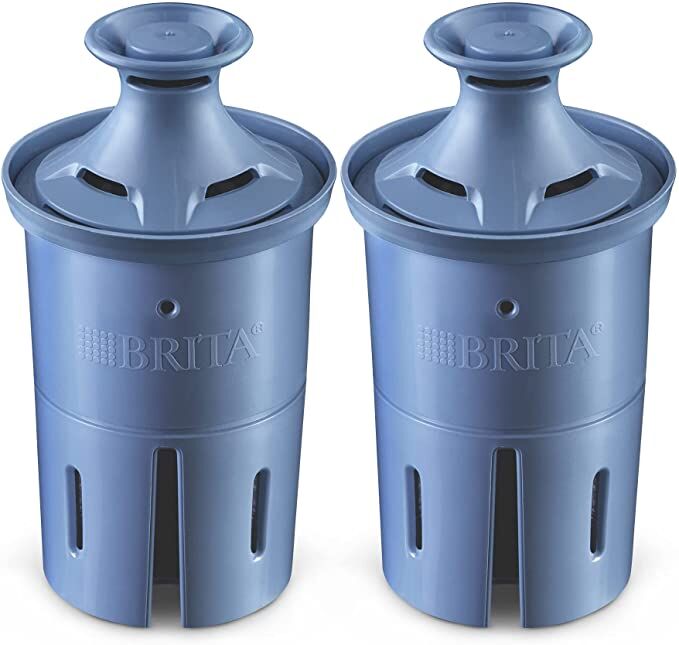

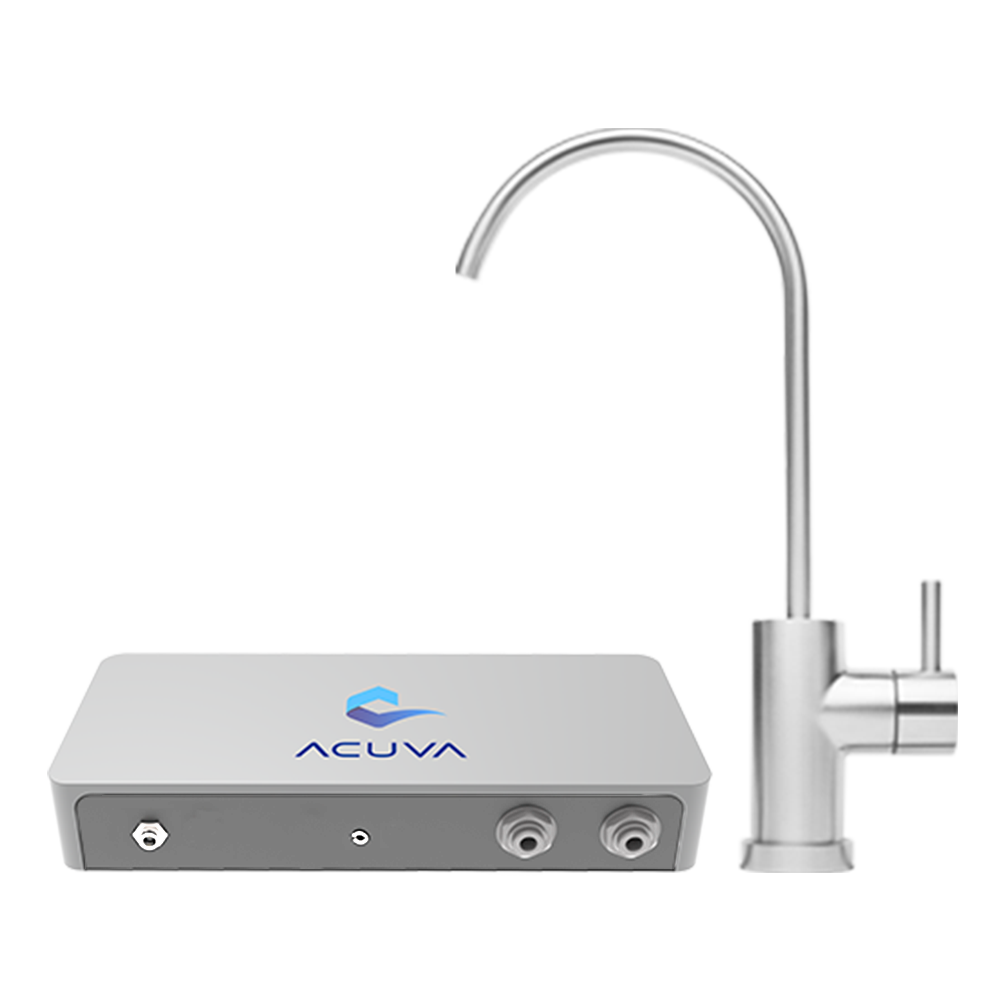
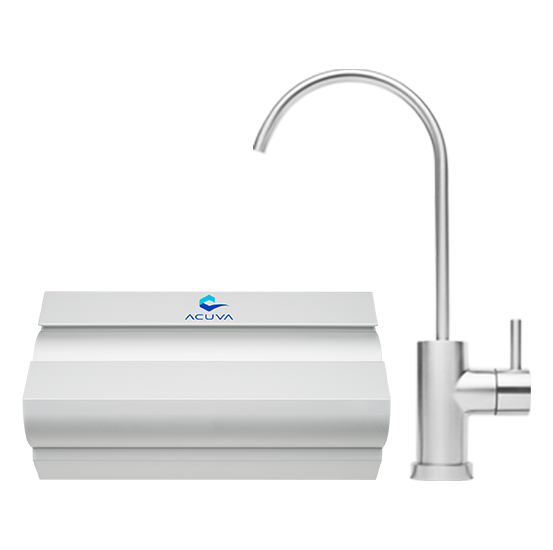
Leave a Reply
You must be logged in to post a comment.